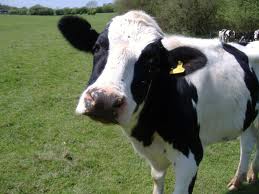10 Best Foods to Eat
*This post is linked to Kelly the Kitchen Kop’s Real Food Wednesdays Blog Carnival!
Nature’s perfect, life-giving food. As opposed to standard commercial milk, mentioned on the last BLOG of “10 Dumbest Foods to Eat”, raw milk from healthy pasture raised cows has the perfect, energy-boosting balance of fat, protein, and carbohydrates and immune-boosting vitamins A and D. You’ll get all the green grass nutrition that we can’t digest, but healthy cows can metabolize so that we get an ultimate benefit for humans. You can also use raw milk to make super nourishing foods like yogurt, quefir, cheese, lact-fermented vegetables, and more. Visit www.realmilk.com to learn more about the safety of raw milk, and find out how you can get deliciously healthy raw milk.
2. Eggs
Nature’s second perfect, life-giving food. This “seed” is power-packed with energy and nutrients, especially when it’s from pasture-raised hens. Raw egg yolks (not the whites) are excellent for their high lecithin content, which is good for stabilizing the adrenal glands. They are also an excellent choice for a baby’s first food, nourishing the developing organs and establishing life-long blood sugar health. Just make your eggs “sunny-side up” or poached, add the raw yolks to smoothies, or soft-boil and enjoy with a little sea salt!
3. Homemade Soup
Mmmmm….”A good stock will raise the dead” says an old African proverb. Stock made from good stock bones will provide tons of wonderful nutrients including natural gelatin, glucosamine, chondroiton, which are excellent for digestive and bone health. One of the first things I recommend to those who suffer from digestive issues or arthritis is to make a good homemade stock weekly to enjoy as a soup or drink throughout the week. You can see me make my “Homemade Chicken and Vegetable Soup” on my YouTube Channel!
4. Traditionally Prepared Fermented, Soaked, and Cultured Foods
This includes foods like soaked grains and nuts, lacto-fermented vegetables like real saurkraut, and cultured foods like yogurt and quefir. Soaking and properly preparing grains and nuts neutralizes naturally occurring anti-nutrients such as enzyme inhibitors, tannins and phytic acid for better digestion and optimum nutrient uptake. Lacto-fermented and cultured foods contain high levels of enzymes and beneficial bacteria which help maintain homeostasis and balance in the body which means you feel good and prevent disease!
5. Cod Liver Oil, Liver and Organ Meats (source, source, source!)
The orginial superfood! Cod liver oil, unlike your typical “fish oil”, is not only packed with the most complete spread of naturally-occurring essential fatty acids but it is the best source of ultra-important fat-soluble vitamins A and D. The vitamins in cod liver oil are essential for cardiovascular health and immunity. The essential fatty acids are needed for the health of almost every system of the body, and are essential for nutrient absorption. Dr. Weston Price found that cultures that used cod liver oil experienced optimal health.
6. Anti-Oxidant Foods
Do you really understand what an anti-oxidant is and why you need them? (It’s okay if you don’t.) In fact, I’d rather that you don’t “understand” it. In the past decade, the general population has been droned into believing that they need high doses of “anti-oxidants” to avoid cancer and other diseases caused by free-radical damage, which has been great for the anti-oxidant supplement industry. The truth is that you need to help the body produce the anti-oxidants needed to balance the amount of free radicals in the body. You actually do need free radicals in your body. The whole story is that you need a balance- you can have too many or too little. The same idea is true for anti-oxidants. So, the bottom line is that you should eat a diet that avoids the proliferation of oxidized molecules, and supports the balance of anti-oxidants and free radicals for optimum health. The typical American diet promotes oxidative stress and the proliferation of free radicals. This means avoid all highly heated, processed foods and fast foods, reduced fat and dry milk products, and eat a good amount of dark colored organic vegetables and berries daily. Organic organ meats can also be high in anti-oxidants, such as bovine adrenal gland, which is one of nature’s best sources of vitamin C.
Here’s a great article to learn more: http://articles.mercola.com/sites/articles/archive/2001/08/22/antioxidants-part-one.aspx
7. Sea Salt
Unrefined salt is an excellent, traditional source of nearly 80 trace minerals. In fact, this natural bacteria-inhibiting preservative can be considered a mineral “supplement” that is essential to life. On the other hand, pristine white refined varieties are heated to excessive temperatures (some up to 1200 degrees F), stripped of all nutrients, and combined with a myriad of undesirable substances, such as aluminum, sugar and anti-caking agents. Replace these over-refined varieties with mineral-rich, properly harvested salts, such as Celtic, Himalayan, RealSalt and Lima. They offer an abundance of healing qualities and their high moisture and trace mineral content are evident by their subtle grey to pink mineral hues.15 Most health food stores stock one or more of these selections. Click here to shop for Wilderness Family Naturals salt products.
8. Lard…that’s right…Lard and Coconut Oil
The much-maligned saturated fats—which Americans are trying to avoid—are not the cause of our modern diseases. In fact, they play many important roles in heart health and the body chemistry:
Saturated fatty acids constitute at least 50% of the cell membranes. They are what gives our cells necessary stiffness and integrity. They play a vital role in the health of our bones. For calcium to be effectively incorporated into the skeletal structure, at least 50% of the dietary fats should be saturated. They lower Lp(a), a substance in the blood that indicates proneness to heart disease. They protect the liver from alcohol and other toxins, such as Tylenol. They enhance the immune system. They are needed for the proper utilization of essential fatty acids.
Elongated omega-3 fatty acids are better retained in the tissues when the diet is rich in saturated fats.
Saturated 18-carbon stearic acid and 16-carbon palmitic acid are the preferred foods for the heart, which is why the fat around the heart muscle is highly saturated. The heart draws on this reserve of fat in times of stress.
Short- and medium-chain saturated fatty acids have important antimicrobial properties. They protect us against harmful microorganisms in the digestive tract.
The scientific evidence, honestly evaluated, does not support the assertion that “artery-clogging” saturated fats cause heart disease. Actually, evaluation of the fat in artery clogs reveals that only about 26% is saturated. The rest is unsaturated, of which more than half is polyunsaturated.
*Information from this point extracted from this must-read article, “The Skinny On Fats” Written by Mary G. Enig, PhD and Sally Fallon: http://westonaprice.org/know-your-fats/526-skinny-on-fats
9. Organically Produced Meat and Wild Fish
Meats can offer nutrition only as good as the feed the animals consume. The meat of cows roaming on pasture, munching away on their natural diet of fresh grass have approximately four times the amounts vitamins A and E as their commercial grain-fed, feedlot cousins. By design, cows are meant to eat fibrous grasses, plants, and shrubs, which give their meat a nutrient profile similar to healthful wild game, like antelope, deer, and elk. A leisurely life on pasture also keeps cows disease-free from such bacterial contamination as E. coli and Campylobacter, unlike their feedlot cousins who have a much higher risk of contamination.
Sad feedlot cows are raised on genetically modified grain and soy because it speeds growth and bulk quickly. To help further cut feed costs, producers include other “add-ins,” such as municipal garbage, stale pastry, chicken manure and feathers, as well as candy. This backward diet causes the animals to suffer various disorders such as bloat, liver abscesses and acidosis. Jo Robinson, author of Pasture Perfect and owner of the online resource www.eatwild.com, tells us that “Cattle with subacute acidosis kick at their bellies, go off their feed, and eat dirt.” Poor things.
On top of an artificial diet and confinement, modern methods of raising cattle also involve considerable amounts of hormones, steroids, and other chemicals. Approximately twenty million pounds of antibiotics are given to animals each year—most to prevent disease and promote growth. Antibacterials, topical antimicrobials, and insecticides are also used in the feed, living quarters, and directly on the animals themselves. Subjecting animals to this chemical abuse is terrible, and the ramifications to your family are also significant.
Non-therapeutic uses of antibiotics in agriculture have created what can be called “super-bugs,” bacteria that have adapted to the overuse of antibiotics over the years and become stronger, more virulent. When researchers tested ground chicken, turkey, beef, and pork bought in supermarkets, they found that 20 percent of them contained Salmonella. Even worse, 84 percent of the contaminated samples were resistant to at least one antibiotic and more than half were resistant to at least three.
Finally, hormone residues in meat and dairy products can disrupt our body’s natural hormone balance. Many experts suspect that consumption of hormone-treated beef and dairy products may contribute to girls reaching puberty earlier, thus making them more susceptible to hormonal conditions later in life. Interestingly, the European Union has banned the use of hormones in livestock for fear they pose a health risk, and refuses to import hormone-treated Canadian and U.S. meat.
PASTURED CHICKENS AND EGGS vs . FEEDLOT RAISED:
Chickens allowed to forage for bugs and grass and soak up sunshine in the great outdoors produce eggs with greater amounts of vitamin E and vitamin A than their commercial, cooped up, pellet-fed counterparts. The extra nutrients available in the pasture-fed eggs are obvious by the color of the egg’s yolk. The more yellow/orange the yolk, the higher the level of carotenoids. Eggs from pastured hens also contain omega-3 and omega-6 fatty acids in the beneficial ratio of approximately 1:1, unlike commercial eggs, which average an unhealthy 1:19! Similar to caged cows, battery chickens are squeezed into small cages or sheds, often windowless, and overrun with their own droppings. There is no room for them to do what chickens do—graze, root, dust themselves, or roost, let alone sit.
10. Organic Fruits and Vegetables
Buying organic is in vogue these days, and for good reason. With more nutrients and fewer chemicals, why not buy organic whenever possible? A study published in 2001 The Journal of Alternative and Complementary Medicine found after 1,240 comparisons of 35 vitamins and minerals in organic and conventional produce that the organic versions contained higher amounts of most vitamins and minerals—27 percent more vitamin C, 29 percent more magnesium, 86 percent more chromium and 375 percent more selenium. The chemical-free foods were also lower in cancer-causing nitrates and toxic heavy metals.
Another powerful study published in 2003 Environmental Health Perspectives evaluated the levels of pesticide metabolites in the urine of two groups of children and found that children eating organic fruits and vegetables, consuming organic milk and drinking organic juices had levels of pesticide metabolites six to nine times lower than children eating conventionally grown food. Bear in mind, pesticides are up to ten times more toxic to children than adults, due to their smaller body size and developing organ systems, so it is especially important to minimize their exposure whenever possible during the growing years.
*The following two commentaries are based on information from the article, “Modernizing Your Diet With Traditional Foods” by Jen Allbritton, CN. I just couldn’t have said it better. Here is a link to her full article with sources and links:
http://westonaprice.org/childrens-health/1914-modernizing-your-diet-with-traditional-foods



